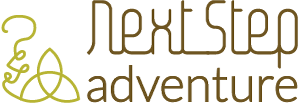Get Healthy

Driving to Florida for vacation, we listened to three books–Connected, Thrive, and Switch. I learned about all of them when I worked with Healthy Polk 2020 last summer. My task was to gather a group of experts around the priority, “Empower more people to take more responsibility for maintaining their health.”
My team thought the wording of the priority judgmental. They took out “responsibility” and raised the bar from “maintaining” to enhancing. Their proposed priority reads, “Empower more people to enhance their health.” By building on strengths, people can leave stymied life roles behind, and move forward through trust-based relationships.
Of the ten Healthy Polk 2020 goals identified in 2009, this is the broadest, and the only one that addresses lifestyle and behavior. That’s where Switch comes in. It’s by Chip and Dan Heath, authors of Made to Stick, a book I’ve loved, shared, and used as reference for several years. Switch frames research about how change happens around a metaphor of elephant and rider.
All that Priority #8 of Healthy Polk 2020 seeks to change is, well, just the way we take care of our health, not just our physical health. My expert team defined health in broad terms, not just metabolic risk factors or healthy weight, but in terms of mental, spiritual, cultural and financial health. That’s where Thrive comes in.
Dan Buettner has conducted research all over the world, traveling to communities where people live the longest, happiest lives. One result is Thrive. Another is the Blue Zones Web site where it’s easy to spend a chunk of time, learning about yourself, and the things you can do to be healthier and happier. The Expert Team aligned their definition of health with the research of the Blue Zones project, addressing community, flow, meaningful work and other life style choices.
One of the cool things that happened with my Healthy Polk work is that about the same time we were wrapping up our work, Governor Branstad launched the Healthiest State initiative, and Wellmark announced funding for the Iowa BlueZones Project, through which ten Iowa communities will be able to develop tools and programs to live longer, happier lives.
Another gap my team identified was that neighborhoods and communities are not empowered to support and promote health. The action needed to close this gap needs further definition, but the vision is for churches, schools and neighborhood associations to develop networks that support healthy habits. Which is where the third book comes in. Connected explores the profound effect that our friends have on us. The research that caught my eye first is that people who hang out with obese people tend to gain weight. It makes sense, but surprised me nonetheless.
As my team discussed what “more people” meant, they envisioned a ripple effect, beginning with us, and spreading through our community organizations and friends. What do YOU think we need to do to start that ripple? Do you want to be a part of it? Let’s do it!

Martha,
I agree, those are great books you listened to. Thrive can teach us so much about “wellness” and being connected, truly connected to our life passion, making time invest in that passion and the power of connecting with others.
This is a great website you have developed. Thank you.
Becky Lang
Thanks Becky, and thanks so much for your contribution to Healthy Polk 2020 and the health of Iowans in general.
Ames, Cedar Falls, Cedar Rapids, Clinton, Davenport, Mason City, Muscatine, Ottumwa, Sioux City, Spencer, and Waterloo are all finalists to be demonstration communities in the Blue Zones Project. If they are chosen, they will work to bring everyone in their communities together to work on projects that will make them healthier. Check out http://www.bluezonesproject.com